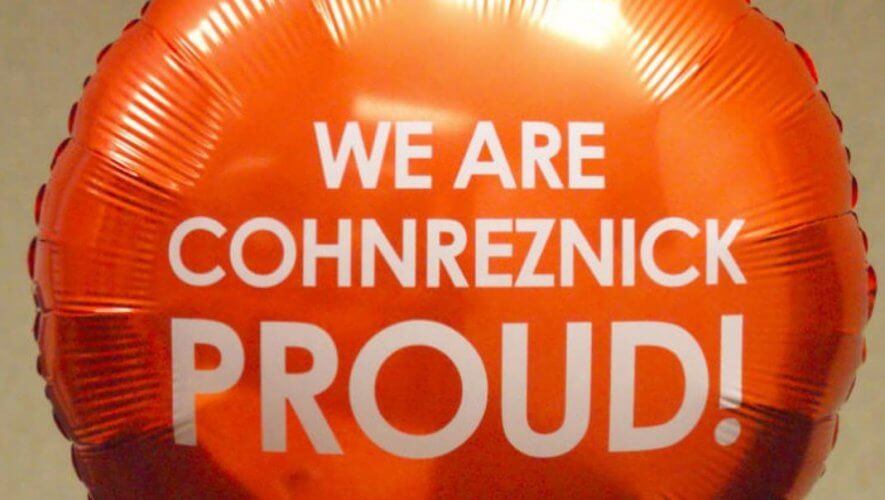When Thomson Reuters reported late last year that the Financial Accounting Standards Board (FASB) had proposed an eighth round of changes to lease accounting rules1, accounting and finance execs around the country channeled their inner Charlie Browns with a collective, “Good grief!”
The grief is understandable, although we’re not sure how “good” it is. The FASB—along with its younger-but-still-well-adjusted sister, the Government Accounting Standards Board, or GASB—has been rolling out major changes to lease accounting standards since 2016. Many of these new rules are already in place, with others scheduled to go into effect soon.
Specifically, accounting and finance professionals are expressing grief over the impact of these new standards on their balance sheets. Once a relatively simple endeavor, determining whether a lease qualifies as an asset or liability has mutated into a kafkaesque odyssey across labyrinthine regulations, and efforts to implement the resulting changes have been marred by traps and pitfalls.
Navigating your grief over lease accounting changes
According to a random episode of 30 Rock, there are five stages of grief2. And—despite the near-total lack of empirical evidence that the five-stages (aka Kübler-Ross) model of grief is real or helpful in any way3—we’re not going to risk arguing with Alec Baldwin at this particular time.
Instead, because it’s fun and should make for a good article, we’ll plow ahead with the unfounded assumption that grief over the new lease accounting standards unfolds in a Kübler-Ross kind of way. Let’s explore the five stages of lease accounting grief—and, more importantly, examine expert advice on how you can navigate and overcome them.
Stage 1 of lease accounting grief:
Denial (of how much work you’ll need to do)
Underestimating (or outright denying) the amount of work required to implement the new lease accounting standards is an understandable temptation—but it’s also a dangerous one.
According to Deloitte, organizations must “radically transform how they account for leases,” with the changes causing a “ripple effect on business processes, from contracts to internal controls to debt agreements with banks.”4 And an EY report revealed that nearly half of surveyed companies anticipate spending $1-5 million to implement the new lease accounting standards.5
To move past denial, you first need to understand the various regulations, their impact, and their deadlines:
- Summary: Requires most operating leases to be recorded on the balance sheet.
- Deadline: Public companies had to comply in 2019. For private companies, see the table below.

- Summary: Requires state and local government organizations to capitalize most leases on the balance sheet.
- Deadline: Applies to fiscal years beginning after June 15, 2021.
GASB 96, Subscription-Based Information Technology Arrangements (SBITAs)
- Summary: Requires government entities to recognize a right-to-use subscription asset and corresponding subscription liability for such contracts with a specified term.
- Deadline: Applies to fiscal years beginning after June 15, 2022.
And here are some more actions you can take to overcome lease accounting denial and procrastination, courtesy of the experts at EZLease:
- Build time into your project to identify and load leases.
- Consider choosing technology that has a short implementation timeline.
- For ongoing compliance, keep the auditor’s “provided by client” list in mind throughout each financial period to avoid the last-minute rush.
Stage 2 of lease accounting grief:
Anger (over discovering you don’t know everything you lease)
Simply identifying everything your company leases can be challenging. In most cases, the real estate team knows what buildings are being leased. But what about all the other leases, for things like photocopiers, office furniture, laptops, servers, forklifts, trucks, cars, or even aircraft?
A study by EZLease found that private companies had the most difficulty finding and analyzing their equipment leases, followed by real estate leases, embedded leases, and international leases.6
When we can’t find what we need to start a project, it definitely makes us angry—like the time we really needed a Phillips-head screwdriver, but all we could find was the court citation from repeatedly breaking into the hardware store across the street.
So, while anger is a reasonable response to being unable to find your leases, you can do plenty of things to restore calm. This handy Quick Start Guide, for instance, provides some concrete steps you can take to locate all your lease data and load it into a centralized database.
Stage 3 of lease accounting grief:
Bargaining (with makeshift solutions that only make things worse)
With actual grief, the bargaining stage involves pledging to reform one’s life in exchange for avoidance or reversal of the initial grief-inducing circumstances. The lease accounting equivalent to this would be something akin to an attitude of, “If I can just survive the first audit under the new standards, I swear I’ll get my lease data organized for real next time.”
But this approach will only cause further problems down the road (which we’ll examine more in the next section.) Instead, the first audit should lay the groundwork for future success. By taking the time upfront to establish complete and accurate lease data, document policy requirements, and implement the right technologies and solutions, you can create a scalable, workable strategy that will make subsequent audits far less painful.
Accounting and finance professionals who spend too long in Stage One (denial) may have particular trouble with this stage, wherein panic over rapidly approaching deadlines leads to short-term fixes or patchwork solutions made from legacy processes and outdated or improper tools.
Spreadsheets, for example, may seem “good enough” to allow you to survive your first audit. Unfortunately, spreadsheets are missing essential functions needed to achieve and maintain compliance, especially when lease counts go above 10.
Here are some other actions you can take to move beyond the bargaining stage (again courtesy of EZLease):
- Work with your auditors ahead of time to understand what they require for the new standards.
- Use technology to ensure your work is repeatable from period to period to make ongoing audits easier.
Stage 4 of lease accounting grief:
Depression (over realizing the long-term impact of quick fixes)
You may be able to avoid this stage if you follow our advice re: bargaining and put the proper lease accounting solutions in place from the start. For many of you, however, that advice is like the $1-off VHS rental Blockbuster coupons we gave our employees as “holiday bonuses” on January 16th—too little, too late.
If you took a triage, duct-tape-style approach to achieve compliance with new lease accounting standards for your first audit, you might already be feeling the sting of the resulting complications. These could include challenges with scalability, version control, collaboration, data integrity, and audit trails. It all adds up to untold amounts of redundant or unnecessary work that—while maybe not “depressing”—is more than enough to give your average accounting or finance exec the lease accounting blues.
As the lawyers in our numerous libel, slander, and felony jaywalking court cases keep reminding us, however, it’s never too late to do things the right way. Which brings us to…
Stage 5 of lease accounting grief:
Acceptance (that your approach needs to change)
At long last, there’s acceptance—the calm, stable relief that makes the fight through denial, anger, bargaining, and depression all worth it. (Or it would be, if the Kübler-Ross model was, you know, real. But you’ve humored this labored metaphor all the way to the end, so we think you deserve some degree of resolution.)
Ultimately, overcoming your grief over the new FASB and GASB standards means accepting that you’ll need to rethink how you handle lease accounting. It means acknowledging that change is required—and that the right way forward may include forgoing legacy processes and solutions in favor of new technology and/or services.
The good news is, the right lease accounting software can help you implement the new standards with minimal cost, risk, and negative impact. But if you decide to go this route, be sure to do your homework.
Qualities to look for when researching lease accounting software include:
-
- Fast setup
- Quick, easy, bulk loading of lease data
- Automated data validation for all related standards
- Easy lease modification and validation of changes
- “Push-button” accounting and disclosure reporting features
- Proven experience with firms of your size
- Training and onboarding support
Alternatively, you can outsource some or all of your lease accounting needs through managed services. This is a good option for if you are:
- Not staffed to set up or manage lease accounting and/or software
- Just starting to manage leases and have a large, complex portfolio
- Running out of time
- Looking for lease abstraction, attestation, policy decisions, and memos
Get (and stay) ahead of lease accounting compliance
By implementing the right business processes, controls, technology, and services, you can stay on top of lease accounting compliance—and achieve sustainable results that allow you to shift focus back to your core mission and customers.
Hundreds of companies of all sizes, with hundreds of thousands of real estate and equipment leases, trust EZLease for their lease accounting needs. Backed by decades of expertise, EZLease helps entities from solo CPAs to Fortune 500 enterprises—carrying anywhere from just a few to over 50,000 leases—achieve and maintain compliance.
You can try EZLease for free for 15 days and return it risk-free after 30 days if you aren’t satisfied. Even better: If you have fewer than 10 leases, EZLease offers a free tier via its Essentials Plan.
Sign up for a free trial now to discover how EZLease can get you compliant with ASC 842, GASB 87, GASB 96, and/or IFRS 16 in just hours—and learn why EZLease is the simplest, highest-rated lease accounting software.
1Lugo, Denise, “FASB Proposes to Clarify Lease Accounting Rules for Subsidiaries Controlled by the Same Parent Company,” Thomson Reuters, December 2, 2022.
2 https://www.youtube.com/watch?v=NIKx9mk5VMU
3 Stroebe M, Schut H, Boerner K, “Cautioning Health-Care Professionals,” Omega (Westport), March 2017.
4“Flashpoint: Changes to Lease Accounting Standards,” Deloitte, 2016.
5Cohn, Michael, “Lease Accounting Changes Expected to Cost Millions,” Accounting Today, December 4, 2018.
6“6 Steps to Finding and Loading Lease Data: EZ Lease Quick Start Guide,” EZLease, 2021.


